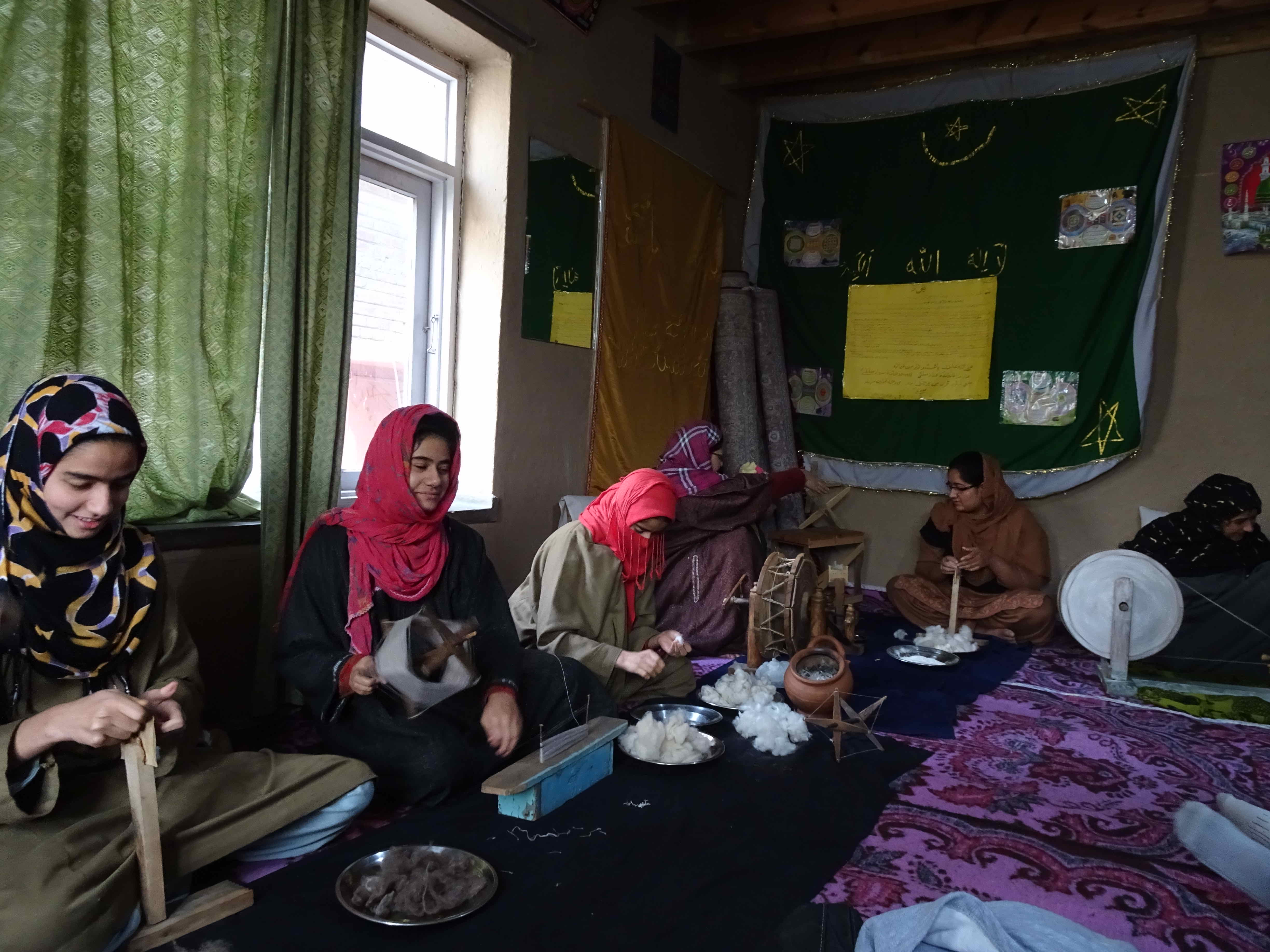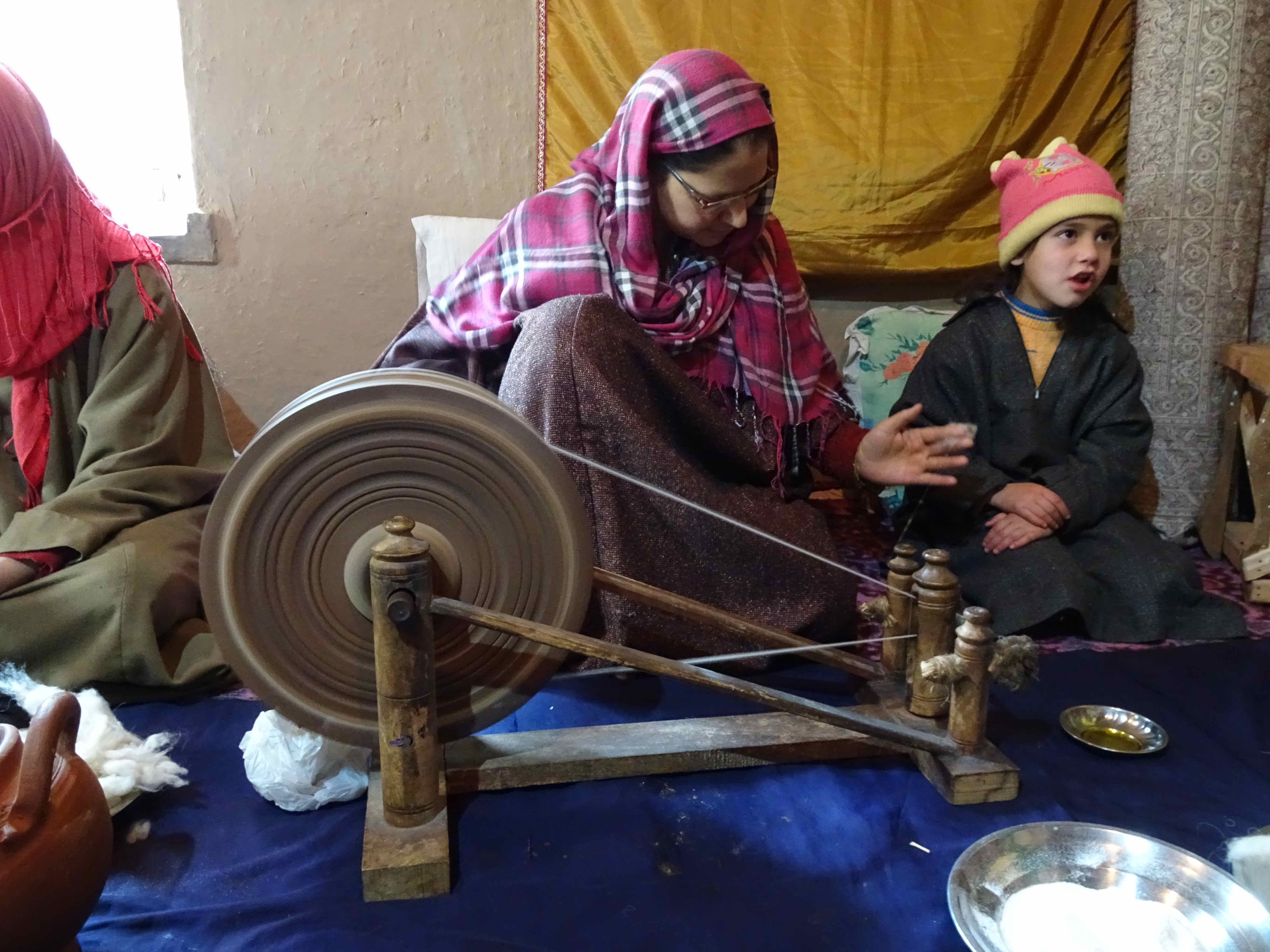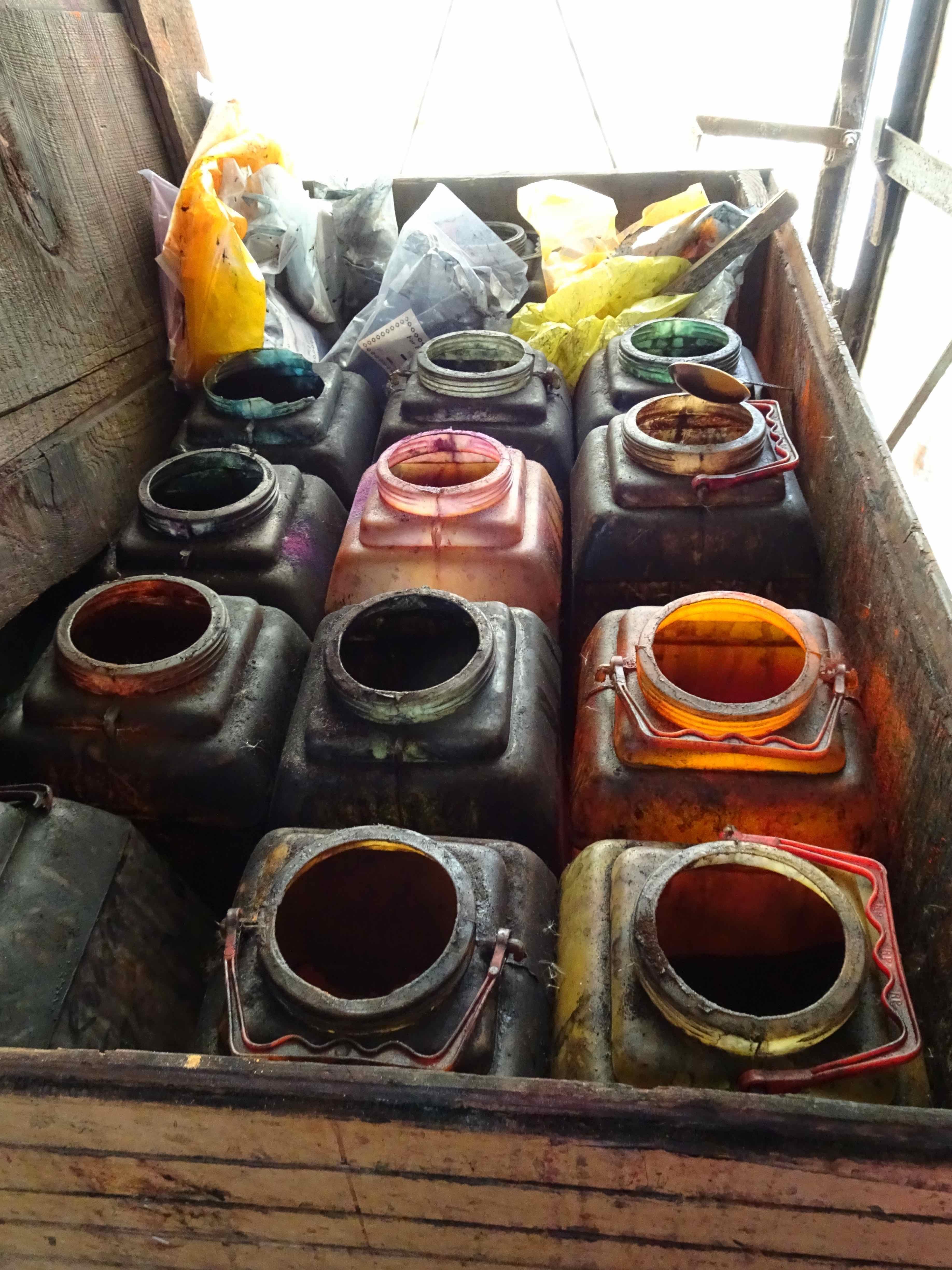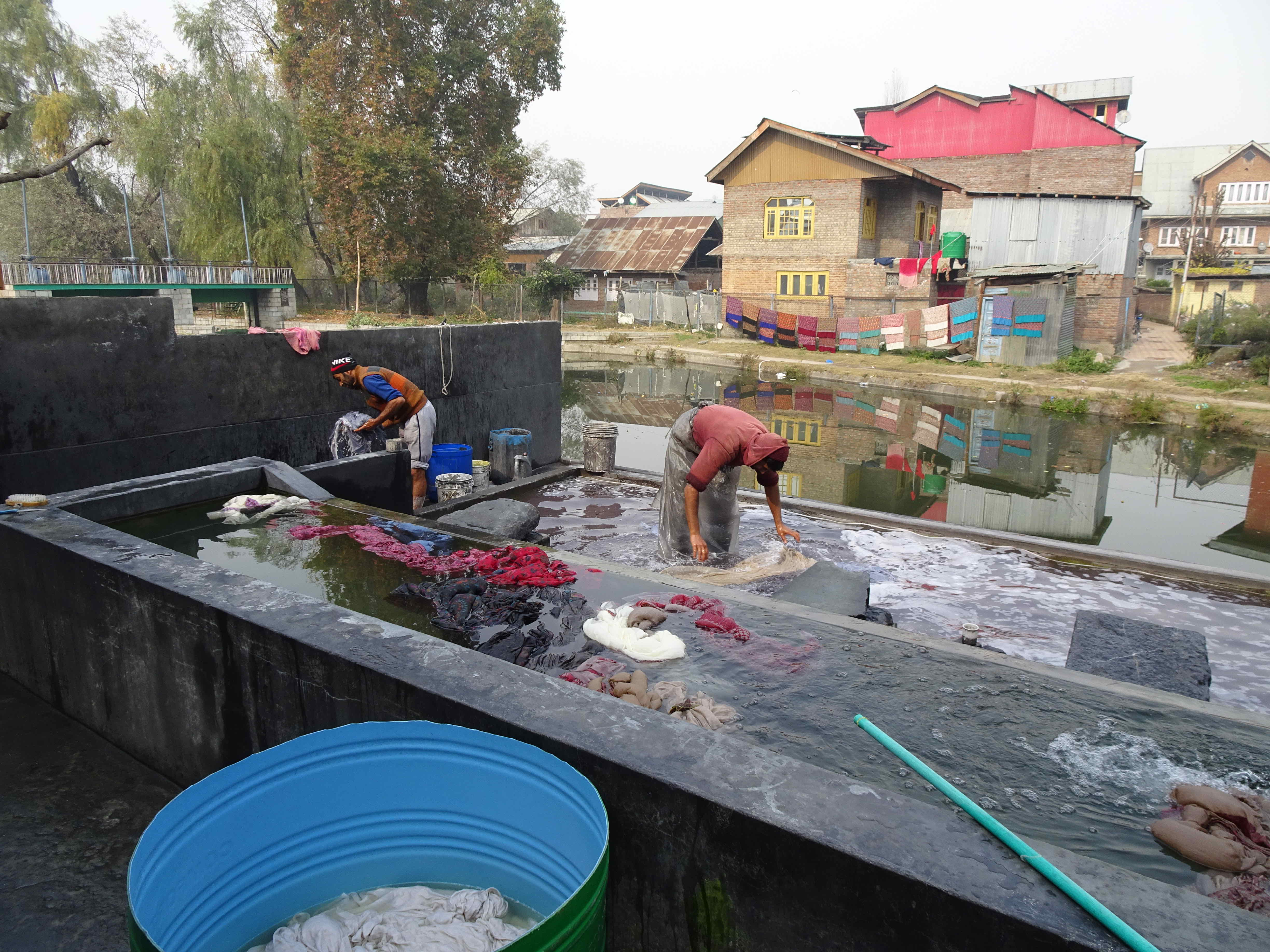We recently went on a textile tour of India. The first stop was Srinagar, Kashmir. We were fortunate to be taken to villages in the area where pashmina fibres (taken from goats in the mountainous Ladakh region) are hand-processed into beautiful shawls.
First the the fibre is removed from the goats by hand combing in spring. It is taken to villages in Kashmir where women gather to clean the fibre (removing seeds and long hairs from the soft wool fibres), align the fibres in preparation for spinning and finally, to spin the fibre. Once spun, it is wound into hanks for weaving.

- From L-R, these women are aligning the fibres, preparing hanks of spun fibre for weaving, cleaning the fibres, spinning, aligning fibres and spinning.

- Spinning

- Spinning
After the wool has been spun, it is taken to another village for weaving into shawls. The weaving that we saw was done by men.

- Weaving
The fabric may then be taken to another village for dying.

- Dyes

- Dying
Once the shawls have been completed, they are taken to yet another village for washing.

- Washing

- Washing
Finally, they are dried in a nearby park.

- Drying in the public park with a game of cricket going on under the shawls
The washing and drying photos show several embroidered shawls – the embroidery will be shown in a later post.